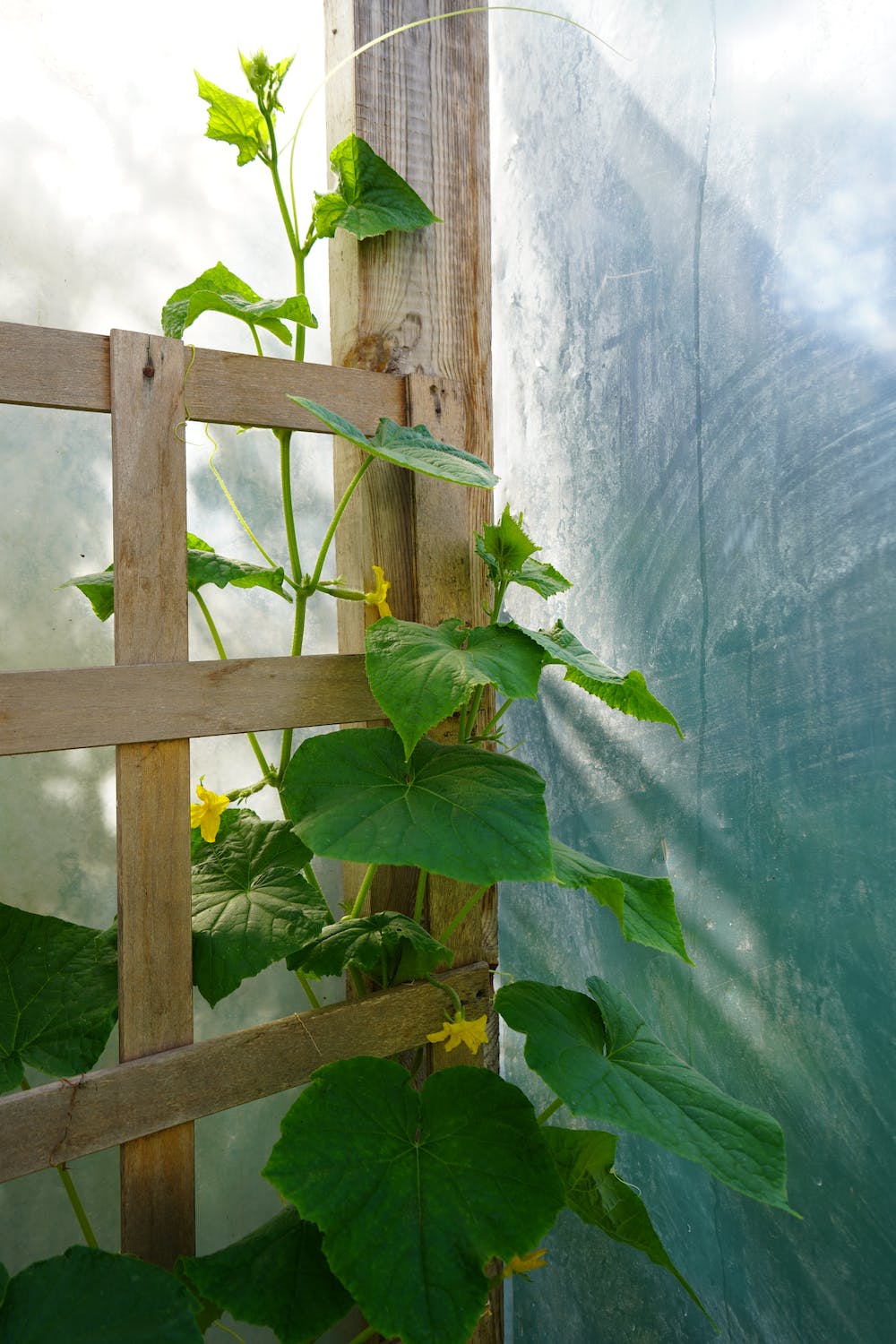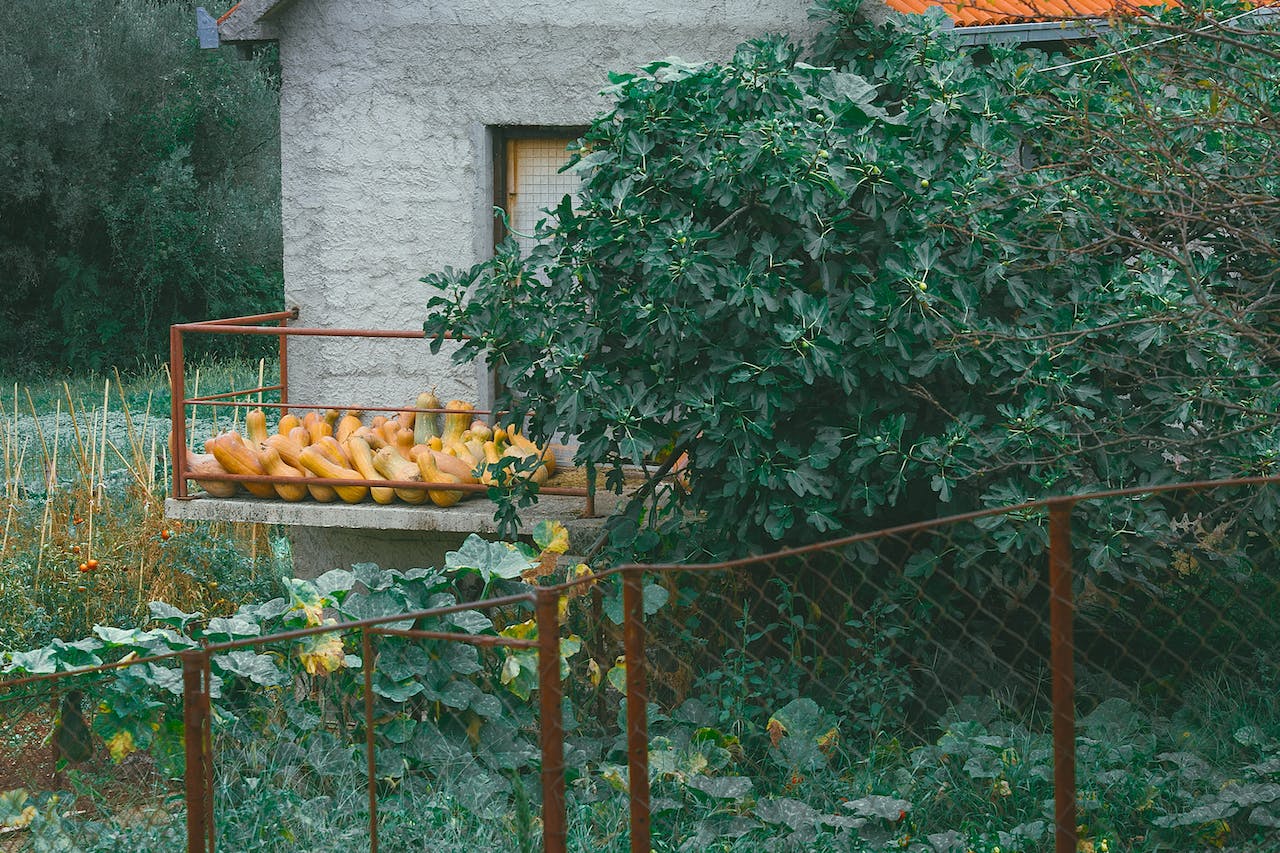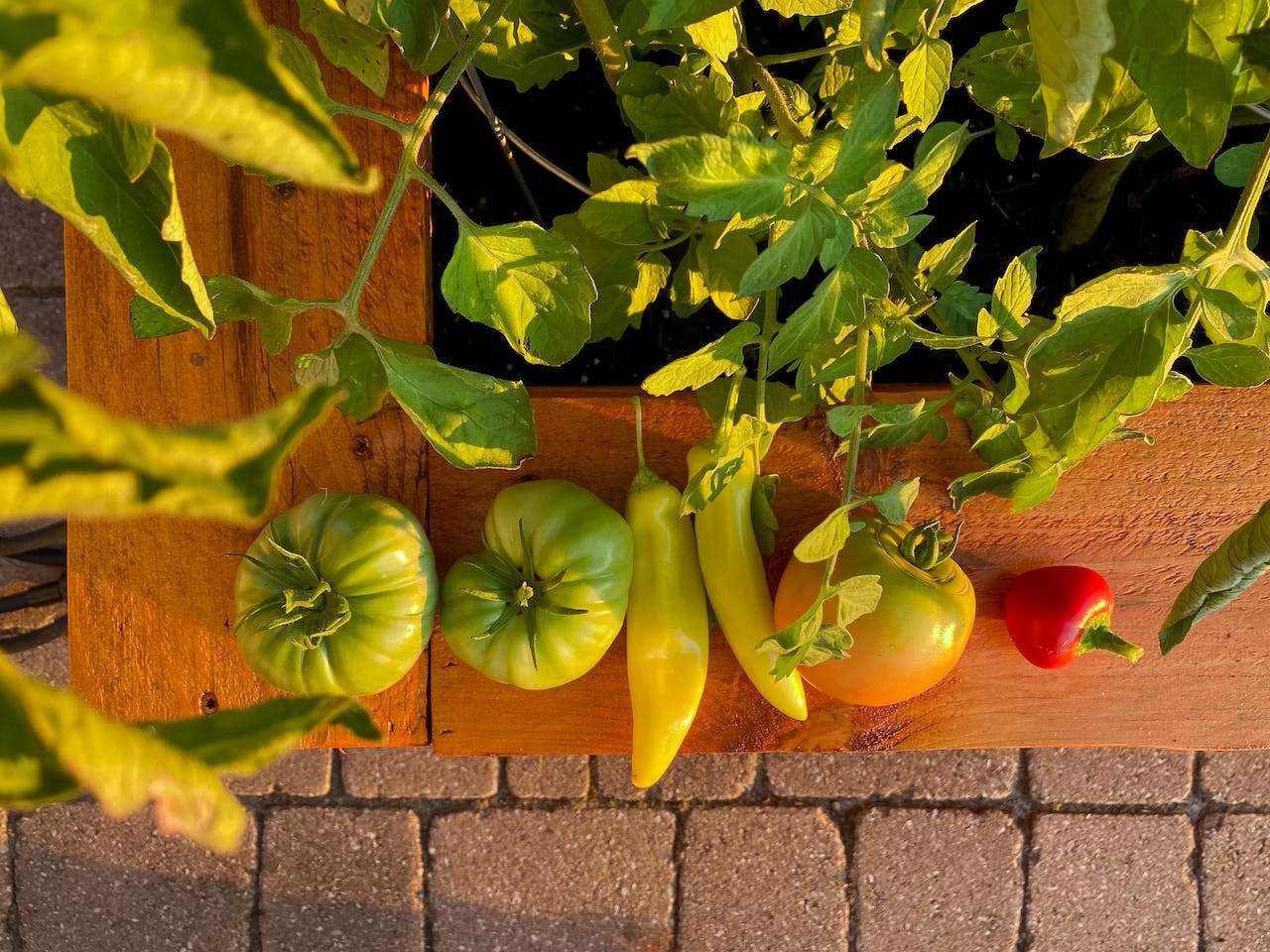
I know vegetable garden planning might sound a bit too organized for some of us who love the spontaneous beauty of gardening, but trust me, a little planning can go a long way.
So, why is planning your vegetable garden so important? Well, picture this: you’re standing in your backyard, surrounded by lush greenery, plucking ripe tomatoes, crisp lettuce, and vibrant bell peppers straight from your garden. That’s the dream, right? And guess what? It’s totally achievable with a bit of thoughtful planning.
Imagine a garden where everything just clicks – plants complementing each other, maximizing space, and minimizing pests. That’s the magic of a well-planned garden. You’re not just growing veggies; you’re creating a harmonious ecosystem right in your backyard.
And here’s the deal – planning isn’t about making things rigid and dull. It’s about setting the stage for a gardening experience that’s not only organized but also super productive. We’re talking less guesswork, fewer surprises, and more time enjoying the fruits (literally!) of your labor. Let’s get started!
Assessing Your Space
Evaluating available space for gardening
Alright, how much space are we working with? If you’re in the apartment or rocking a cozy balcony, fear not! Container gardening is your go-to move. Picture this: pots of various sizes filled with all sorts of goodies – tomatoes, herbs, maybe even some colorful flowers. It’s like a small garden oasis right on your doorstep.
Now, if you’re lucky enough to have a bit more ground to cover, let’s talk raised beds. These are like the superheroes of gardening. Elevated boxes filled with nutrient-rich soil not only look snazzy but also make the most out of your space. And bonus, no more bending over backward to tend to your plants. Win-win!
I’ve seen folks transform small balconies into vibrant jungles and tiny backyards into veggie wonderlands, all thanks to smart use of space. So, get creative! Think vertical with hanging pots or stackable containers. The sky’s the limit, or should I say, your ceiling is the limit.
Considering sunlight exposure
Our green buddies need their daily dose of sunshine to thrive, just like us soaking up vitamin D on a sunny day. So, let’s figure out the sun dance in your garden.
Step one: identify the sunny and shady spots. Take a little stroll around your garden, coffee in hand, if you’re feeling fancy. Note where the sunlight hits like it’s center stage at a rock concert and where the shadows like to chill. This info is gold for your growing game.
Once you’ve mapped out your garden’s sunbathing and shady corners, it’s time to play matchmaker with your plants. Some veggies are total sun-worshippers, basking in the glory of those rays. Think tomatoes, peppers, and the sun-loving squad. They’re like the beach lovers of the plant world.
On the flip side, we’ve got the cool kids who enjoy a bit of shade – your leafy greens, herbs, and other shade-tolerant pals. They’re like the plants that prefer a cozy picnic under a tree rather than a full day at the beach.
Now, here’s the trick: place your sun-loving champs in the spotlight, and let the shade lovers hang out where it’s a bit cooler. It’s like giving each plant its preferred VIP lounge.

Soil Preparation
Soil testing for nutrient levels
You know, soil preparation is one of the important steps of vegetable garden planning that most people ignore. It is the groundwork, the backstage crew that makes the stars (your plants!) shine.
First things first, let’s chat about soil testing. It might sound a bit sciencey, but trust me, it’s like giving your plants a health checkup. You wouldn’t want to run a marathon without knowing if you’re fit, right? The same goes for your garden. Testing the soil tells us about the nutrients it’s packing – the good stuff our plants crave.
So, why does this matter? Well, my gardening buddies, soil health is the key to successful gardening. It’s like the foundation of a house. If it’s strong, the rest falls into place. A nutrient-rich soil means happy, robust plants ready to dazzle you with their blooms and veggies.
Now, let’s talk pH – not the kind you measure in your swimming pool, but the acidity or alkalinity of your soil. Think of it as the Goldilocks zone for your plants. Some like it a bit acidic, others prefer it on the alkaline side. Knowing your soil’s pH helps you pick plants that feel right at home.
And here’s the cool part – if your soil needs a little tweak, you can be the soil wizard with amendments. It’s like adding a dash of seasoning to your favorite dish. Want it a bit more acidic? Add some peat moss. Alkaline vibes? Try a sprinkle of lime. It’s like giving your soil a tailor-made suit for success.
So, grab your soil test kit, channel your inner scientist, and let’s make sure your garden soil is the red carpet your plants deserve.
Composting for enriched soil
Why should we even bother with composting? Well, think of it as the ultimate meal for your plants. Compost is like a superhero mix of organic matter – kitchen scraps, yard waste, and maybe even some shredded newspaper. It’s like a nutrient-packed smoothie for your soil, and who doesn’t want happy, well-fed plants?
Now, let’s dive into some DIY composting techniques. There is no need for a fancy lab coat; all you need is a compost bin or even a simple pile tucked away in a corner of your garden. Throw in your veggie scraps, coffee grounds, eggshells – basically, anything that was once alive and kicking. It’s like recycling kitchen leftovers into plant VIP food.
And here’s the secret sauce: turn that compost regularly. It’s like stirring the pot of a magical potion. The more you mix, the faster it transforms into that black gold your plants adore.
Now, once your compost is looking all dark and crumbly, it’s showtime! Integrate that goodness into your garden soil. Picture it as a spa day for your plants – they’ll be soaking in the nutrients and thriving in no time.
Spread the compost around like you’re generously icing a cake. Don’t be shy; your plants will thank you for this organic feast. The compost improves soil structure, retains moisture, and keeps those hungry plants satisfied.

Crop Selection
Choosing vegetables suited to your region
When vegetable garden planning, you have to choose the plants that are suitable to your region. It’s like your garden’s personality, and we want veggies that vibe with it. Check out your climate and those hardiness zones – it sounds a bit sci-fi, but it’s like a cheat code for choosing plants that can handle your weather mood swings.
So, if you’re in a tropical paradise or a chilly wonderland, there’s a vegetable squad that’ll love your garden vibes. You wouldn’t wear a winter coat to the beach, right? The same goes for your veggies – let’s find them the perfect outfit for the weather.
Now, let’s be detectives and research local pests and diseases. It’s like knowing who the neighborhood troublemakers are. Find out what critters and plant illnesses are common in your area. This way, you can pick veggies that are like superheroes with natural defenses against these garden villains.
For example, if aphids are notorious in your region, there are veggies that release natural repellents, keeping those tiny sap-suckers at bay. It’s like having a vegetable superhero squad that fights off pests without you needing a cape.
Creating a year-round planting schedule
It’s not about a one-time shindig; it’s about keeping the good times rolling with a continuous flow of veggies.
First off, let’s be weather watchers and understand the growing seasons in your region. It’s like tuning in to your garden’s favorite channel. Knowing when it’s planting season and when it’s time to hit pause is crucial. Some veggies are summer lovers, while others thrive in the cooler fall or spring vibes.
So, check your local climate vibes – is it a frosty winter wonderland or a tropical paradise? Understanding this lets you pick veggies that will be strutting their stuff in the prime time of your region’s growing season.
Next, succession planting and crop rotation. It’s like orchestrating a well-choreographed dance for your veggies. Succession planting is all about timing – planting new batches of crops as the previous ones finish their show. This way, you’ve got a continuous parade of veggies throughout the seasons.
And don’t forget about crop rotation! It’s like giving your garden beds a refreshing makeover. Instead of planting the same veggies in the same spot every year, mix it up. It helps prevent soil diseases and keeps your garden beds in tip-top shape. Think of it as a spa day for your soil!

Garden Layout and Design
Planning the layout for optimal plant spacing
This is the most interesting step of vegetable garden planning. Ever heard of square-foot gardening? It’s a game-changer. Imagine your garden divided into neat little squares, each with its own plant party going on. It’s not just visually pleasing; it’s space-efficient and makes sure everyone gets their fair share of sunlight and nutrients.
You can try some companion planting for space efficiency. It’s like the ultimate roommate situation for your veggies. Some plants are like the best of friends, and planting them together not only makes your garden look like a harmonious paradise but also helps them thrive.
For example, tall plants can provide shade for smaller ones, and certain combos can keep pests at bay. It’s like a well-choreographed dance where everyone has their role.
So, when you’re sketching out your garden layout, think of it as planning a seating chart for a fabulous party. Consider the needs and personalities of each plant, and arrange them in a way that maximizes their happiness and yours.
Incorporating aesthetics into the garden design
Let’s talk about pathways and borders. Consider pathways as the red carpet for your plants – guiding you through the lush wonders. They don’t have to be fancy; even a simple gravel or stepping stone path adds that touch of elegance.
Now, borders are like the finishing touch to your garden canvas. Picture a beautiful painting with a lovely frame; that’s what borders do for your garden beds. Whether it’s low hedges, colorful flowers, or even decorative stones, they define and elevate the look of your garden.
You can consider vertical gardening. Vertical gardening is like adding a second level to your garden, a green skyscraper of sorts. It’s not just about saving space (which is awesome); it’s about turning your garden into a living piece of art. Think trellises, hanging planters, or even a vertical herb garden. It’s like adding a green tapestry to your outdoor space.
And here’s the secret sauce: vertical gardening isn’t just practical; it’s a visual stunner. Imagine vines cascading down or herbs hanging in adorable plant pockets – it’s a feast for the eyes and a space-saving miracle.
Final Thoughts: Vegetable Garden Planning
Now, my gardening pals, it’s time to reap what we’ve sown. As you step into your garden, take a moment to enjoy the fruits (and veggies) of your labor. From those first tiny seeds to the vibrant harvest, each step was a celebration of growth, learning, and a little dirt under the fingernails.
And here’s the deal – gardening is a journey, not a destination. So, whether you’re a seasoned green thumb or just starting, I want to hear from you. Share your victories, spill the dirt on your challenges, and let’s build a community of garden enthusiasts.
Drop your thoughts, questions, or funny vegetable garden planning stories in the comments below. I’m here to help, learn, and celebrate with you.





